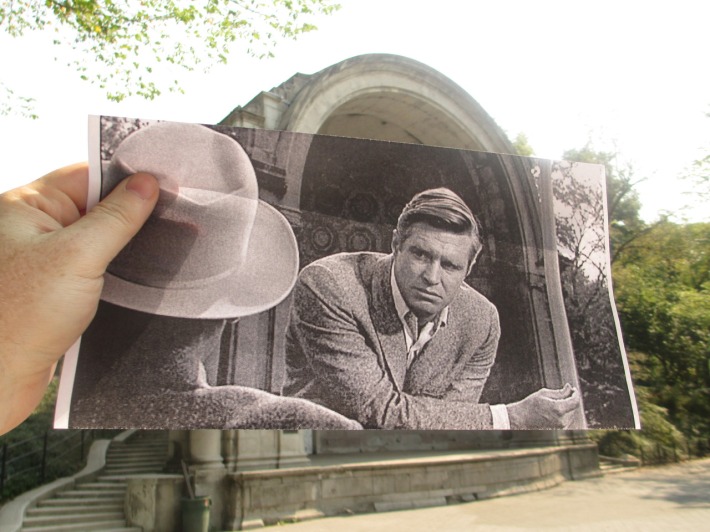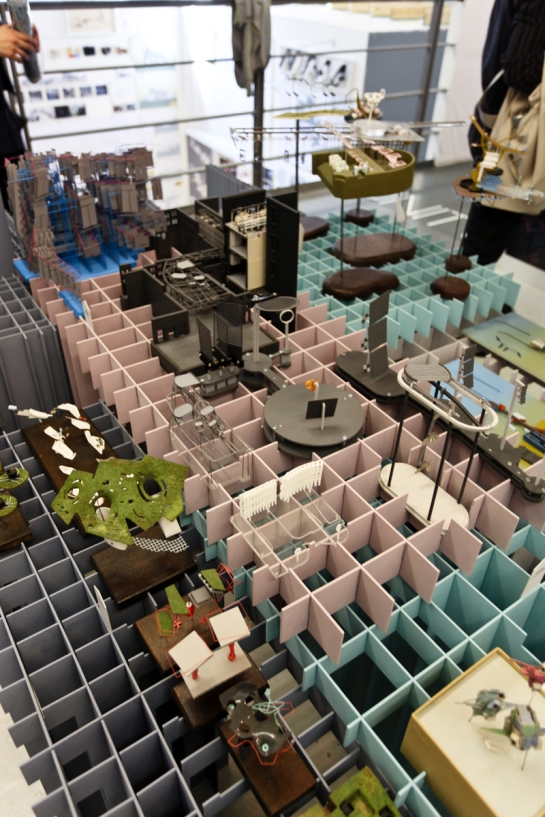Bartlett Unit Four has moved its website to a new location, to better build and display an archive of work and approaches. Please redirect your browser to www.unit-four.net for the new blog location, news and student work.
U4 Field Trip Review Pt.1
Belated photos/insights from the LA field trip. 1st Update – Unit 4 visited Bryan Cantley at Fullerton Uni, to get an insight into the drawing practice and design research that he produces. Bryan very generously laid out and took us through an archive of his work, speaking at length on a number of projects. All photos courtesy of CSUF / Matthew Gush / Bryan Cantley.
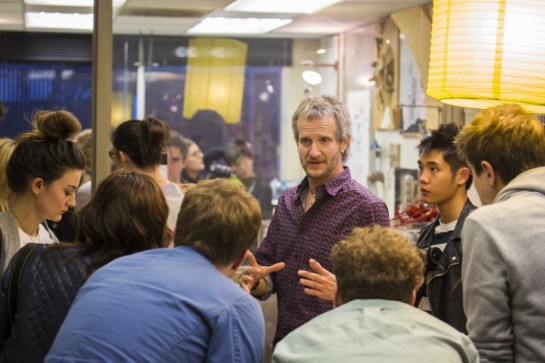
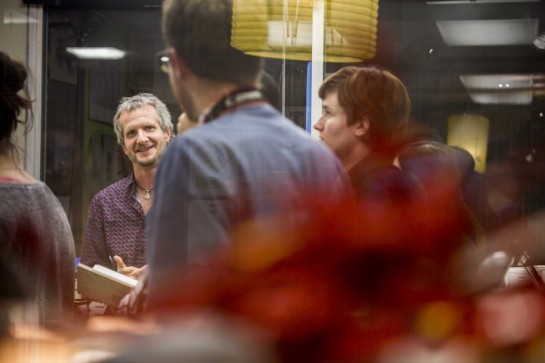
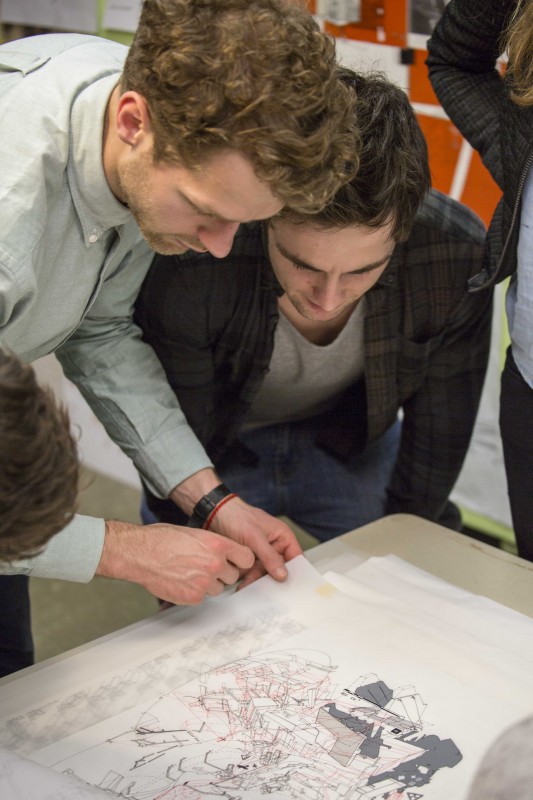
Many thanks to Bryan for being such a hospitable host!
Mission 26
Time lapse video of Mission 26, the last journey of Space Shuttle Endeavour, from LAX to the California Science Center.
Trails and Image Stacking
Christopher Malin produced this video by using ‘image stacking’ software and the archive of photos taken from the International Space Station. Using software called StarStaX he creates landscapes of light and spaces conjured through a digital photographic process. The video becomes a strange landscape of stationary-movement.
By combining the software designed for star-trail imagery with other light sources, curious ephemeral architectural effects might be achieved such as this photo by flickr user Ningaloo:

3D Scanning Museum Pieces using standard cameras

Image by Christian Pramuk featured in Wired.
An article in Wired details how visitors to a special event at the San Francisco Asian Art Museum used software which can interpolate standard photographs into printable 3d models.
Using Autodesk 123D, through uploading photographs from multiple angles, one can compose a 3D model of an object.
See here:
http://www.123dapp.com/catch#atAGlance
The application can even be used on phones and iPads in order to capture imagery which is then constructed into 3D to be printed, rendered or shared.
Via: http://www.wired.com/design/2012/10/scanathon/?pid=1041
Pinball schematics

Pinball machines use complex electronic circuits to define the systems and possibilities of game play within the machine – like a tiny city formed through language of buffers, bumpers, flippers and accelerators. And they become beautiful drawings in their own right as a result of this complexity.

Lo-fi Movie Re-creations
Christopher Moloney has built up a tumblr archive of New York city views, augmented by overlaying black and white prints of movies that were shot at the exact location.
See more here: http://philmfotos.tumblr.com/
The Final Expo(sé)!
Between the 22nd and 30th June the Unit Four show was presented as part of the Bartlett’s Summer Exhibition. Inspired by the notion of a Pastel Alcatraz, the students developed a typology of bespoke model tables derived from the overlaid grids and bars we photographed in the prison block itself as part of our study trip.
The unit also designed and edited their own newspaper detailing their travels to SF and the projects and research it inspired. Edition of 500 is sold out, but an online version of the publication can be viewed on the Newspaper Club’s Newsagent:
http://www.newspaperclub.com/Unit4/newspapers/18702-corrected-u4-publication
Many thanks to all of the students who put on a great show and expended much effort across the whole year resulting in some wonderful work, particular congratulations to Brook Lin who received the Donaldson Medal as the top graduating student as well as the Fitzroy Robinson drawing prize and RIBA Bronze Medal nomination – as well as Matthew Lyall in Yr2 who received the Narinder Sagoo drawing prize and Luke Scott who was on the Dean’s List for achieving a first class degree.
Unit 4 2011-12: Yr2 Sonia Ho, Jackey Ip, Ness Lafoy, Matthew Lyall, Isobel Parnell, Carina Tran
Yr3: Kacper Chmielewski, Charles Dorrance-King, Brook Lin, Luke Scott
Concept art: ‘Analogue’ and digital working processes
Concept artist Roel Jovellano uses a time lapse video to demonstrate his process of designing a weapon structure for the forthcoming game Planetside. It is interesting to note the methods by which the design is realised, first through quick digital sketches using a tablet, through to a 3d model fleshing out these concepts into a ‘physical’ form from which a render is taken and then worked back into by (digitised) hand. This composite, conversational way of working between the 2D and 3D, and the rapidity of the thought generating sketch vs. the computer model is increasingly relevant to the ways architects work nowadays – or rather how the visualisation industry produces this composite architectures enmeshed together from layers of ‘true’ (constructed) or ‘false’ (indicative) geometries designed to illustrate the proposition in its most evocative light.
And in relation to architecture students, it gives insight into the potential ways in which atmospheric and textural qualities may be deployed and through digital painting spaces can be augmented to enliven an architectural scene.
Via: http://www.rockpapershotgun.com/2012/02/25/a-beautiful-planetside-2-time-lapse-design-video/
http://www.vg247.com/2012/02/24/planetside-2-video-shows-the-prototype-sky-lance-weapon/
3d Printed Minecraft Village
Post-Apocalyptic Research Institute have recreated a village from the game Minecraft, by exporting geometry from the game itself and 3d printing it. Inhabitable spaces constructed within the game block by block become transcribed into physical geometry, producing a static three dimensional cartography of an ever expanding and shifting digital terrain. As printing and milling technologies move forward, one could imagine these cartographic models become ever larger, allowing digital communities, territories and architectures to weave into the physical city – or producing the emergence of maps at a 1:1 scale, similar to Borges’ On Exactitude in Science.
Their flickr photostream also shows beautiful prints chopped into sections, like an inhabitable cake or a stylised child’s toy version of an existing building.

Via PC Gamer: http://www.pcgamer.com/2012/02/07/minecraft-video-shows-lovely-3d-printed-minecraft-village/

